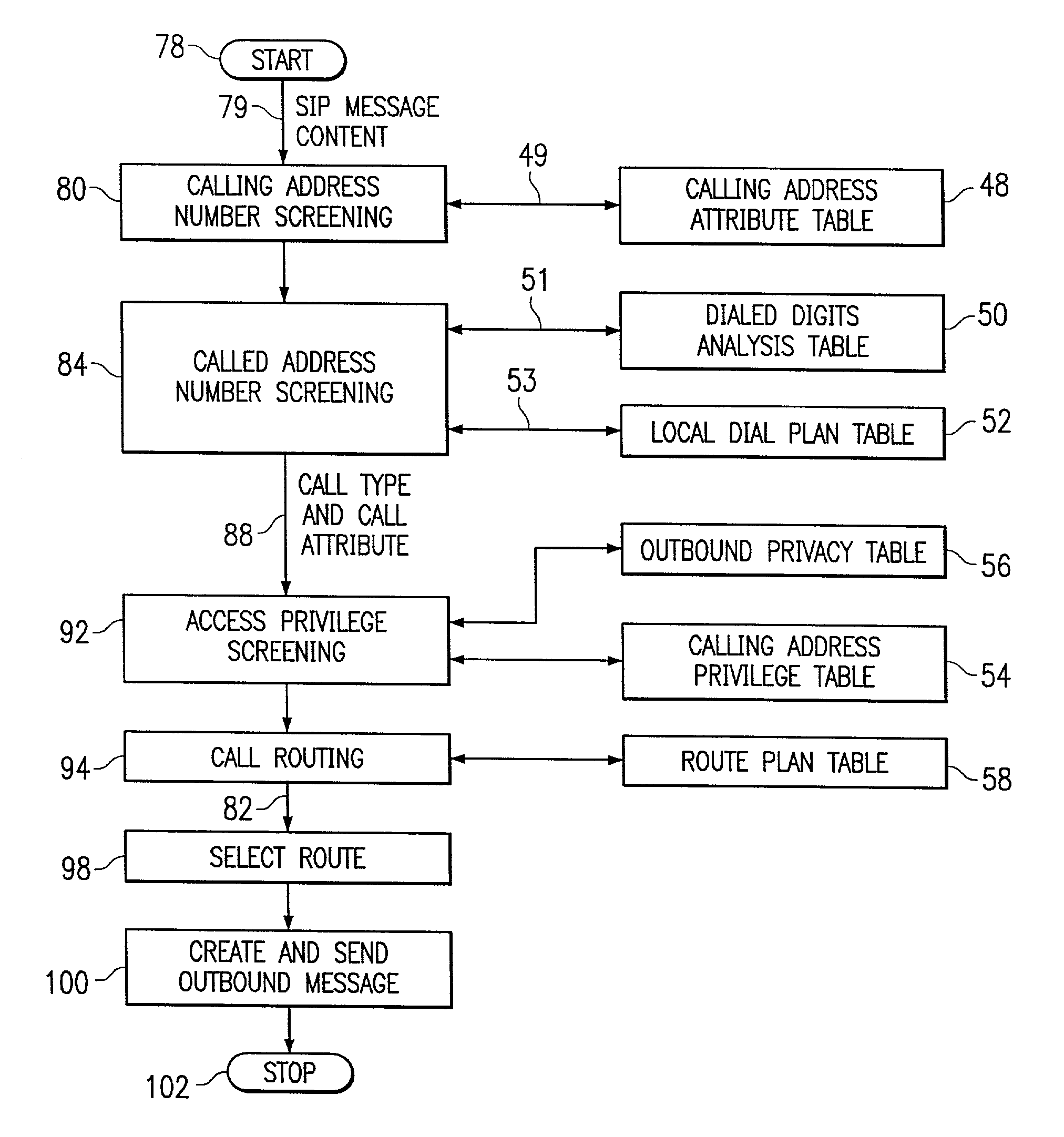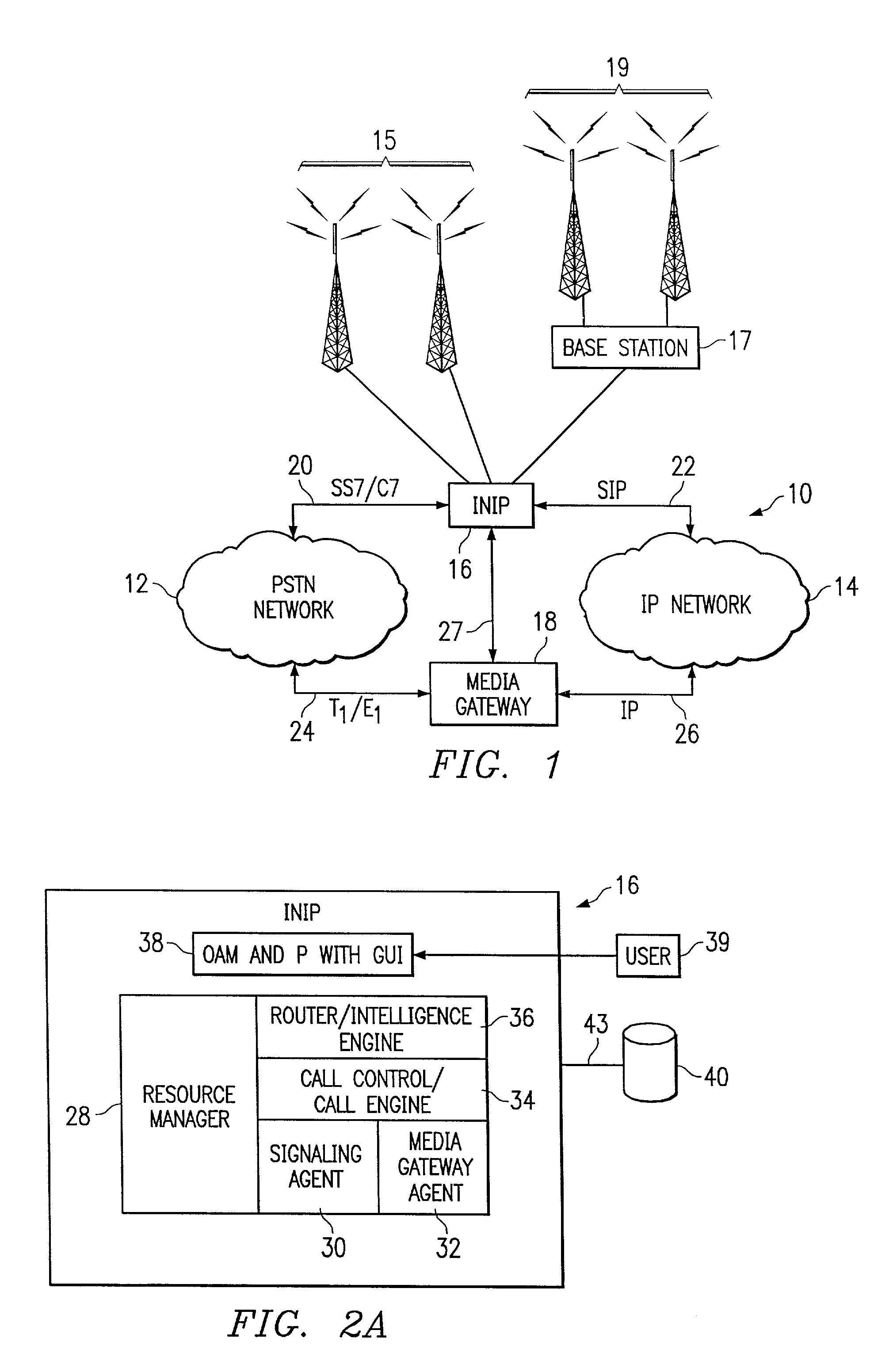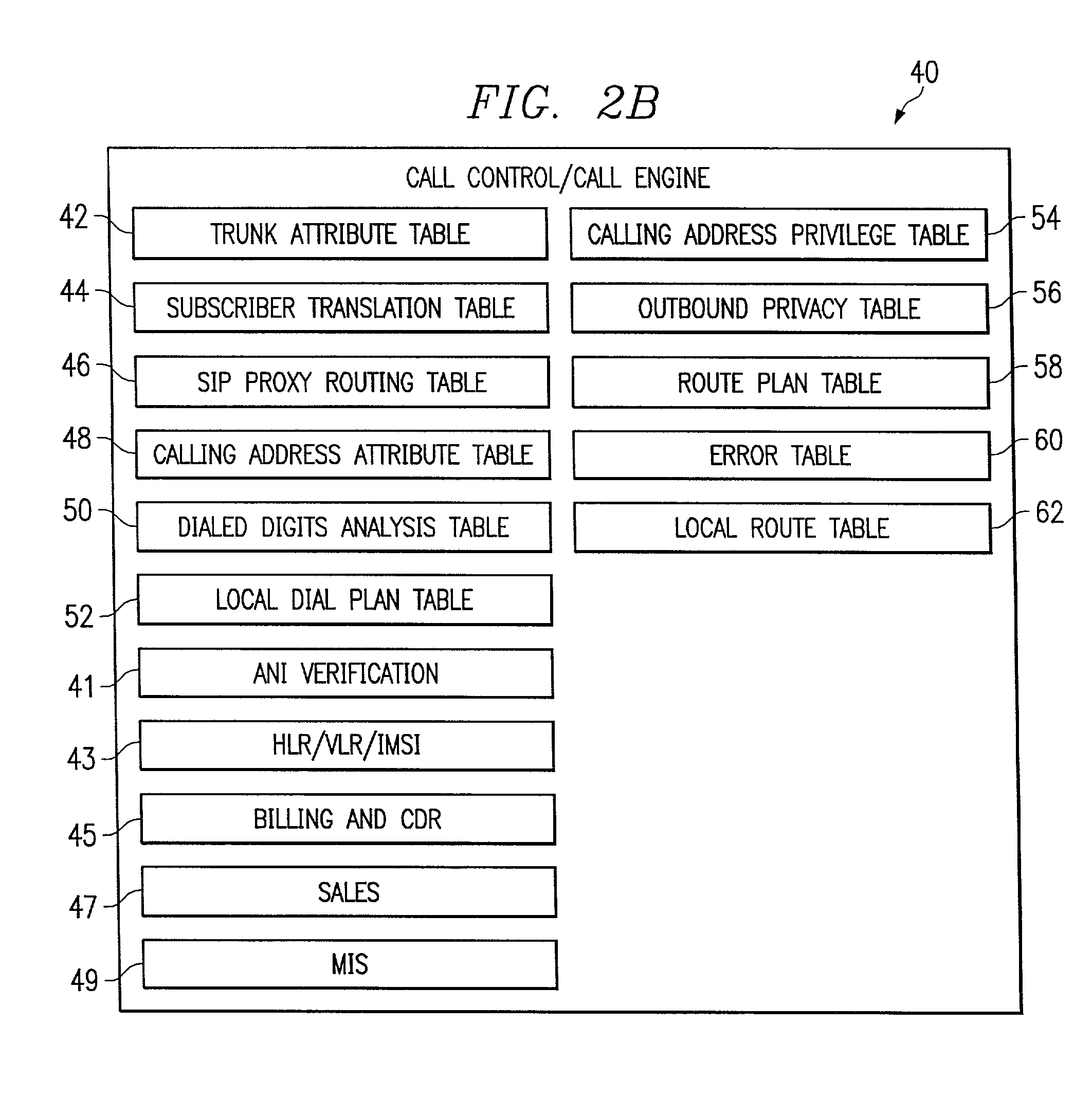Intelligence engine
a technology of intelligence engine and intelligence, applied in the field of telecommunications systems and methods, can solve the problems of increasing complexity of inter-personal and inter-organizational communication, requiring a great deal of development time and resources, and time-consuming and difficult new service and feature development on this complex network, so as to reduce the number of ports, improve the ease of maintaining and/or updating databases, and reduce redundancy
- Summary
- Abstract
- Description
- Claims
- Application Information
AI Technical Summary
Benefits of technology
Problems solved by technology
Method used
Image
Examples
Embodiment Construction
[0038]Example embodiments of the invention are best understood by referring to FIGS. 1 through 19 of the drawings like numerals being used for like and corresponding parts of the various drawings.
[0039]FIG. 1 is a block diagram of a communications network 10 utilizing the teachings of the present invention. Communication network 10 includes a public switched telephone network (PSTN) 12 and an Internet Protocol network (IP) 14. A call routing and signaling system 16 and a media gateway 18 provide connectivity between PSTN 12 and IP network 14. Call routing and signaling system 16 also provides connectivity to wireless systems such as base station radio systems 15, and base station or radio gateway 17, which is operable to connect to wireless systems 19. Base station radio systems 15 may include, but are not limited to, AMPS, GSM, CDMA, and TDMA technologies, and base station or radio gateway 17 may include, but is not limited to, GSM, W-CDMA, W-TDMA, and GPRS technology, which may be...
PUM
 Login to View More
Login to View More Abstract
Description
Claims
Application Information
 Login to View More
Login to View More - R&D
- Intellectual Property
- Life Sciences
- Materials
- Tech Scout
- Unparalleled Data Quality
- Higher Quality Content
- 60% Fewer Hallucinations
Browse by: Latest US Patents, China's latest patents, Technical Efficacy Thesaurus, Application Domain, Technology Topic, Popular Technical Reports.
© 2025 PatSnap. All rights reserved.Legal|Privacy policy|Modern Slavery Act Transparency Statement|Sitemap|About US| Contact US: help@patsnap.com



